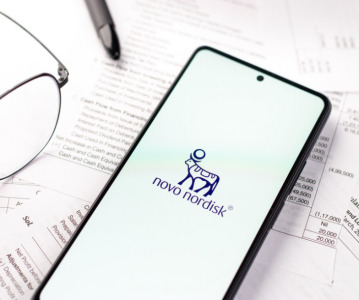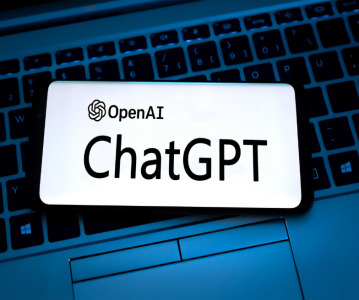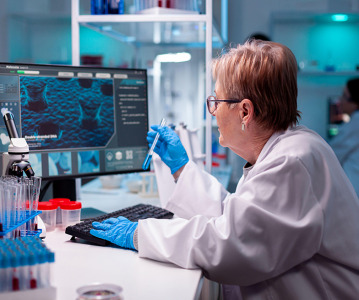Pharmapack 2021: Increasing connectivity is the key to patient centricity and simplified access to product information

During the live Innovation in Connectivity Roundtable at the Pharmapack 2021 online conference, experts discussed how the latest innovations in digital technology are shaping industry ambitions to put the patient journey at the heart of its drug device and delivery solutions by simplifying product information via increased connectivity.
Mark Tunkel, Global Category Director for Insight Innovation at Nemera said the primary method his company used was applied ethnography, which he defined as “being in that environment of use through a combination of interviews and observations.”
“We’re looking at these things broadly: the ability to go through the process of using a device successfully but extending that and thinking about all the stuff from when a patient might be diagnosed to receiving their device and again that entire process of preparing, administering and disposing of it,” he said.
He added that an understanding of how “moment-based interactions” might change over time as people go through the process of onboarding into a new device or going through life stages “can give the best data points that can be synthesised with others as we look at a larger ecosystem of providers and payers to build that foundation around what the best device-type modality may be.”
Nathalie Wardé-Dunoyer, CEO & Founder, D4P pharma said one common problem within healthcare settings for stakeholders such as pharmacists, caregivers or hospitals is that there is no interoperability of the systems: “Everybody is still working in silo; that may be interesting for the information system (IS) providers but for the customers, it is a nightmare because they have to deal with several information systems, it wastes time and introduces the risk of errors.”
She added that the use of standards is key in order to reduce not the amount of IS but to reduce the complexity and allow different systems to talk to each other.
Lionel Jeannin, Group Head Oral Packaging & Delivery Systems, Novartis Pharma AG said that with regard to providing better-quality product information to patients, legacy paper-based product information leaflets are often written in very small fonts, different languages and even folded in a strange way: “It’s not something we could call user-friendly and defeats the purpose of properly informing patients. I think we should be able to do better than this.”
Lise Wagner, Accessibility Specialist and User Expert, OKEENEA said the main issue for blind patients was the huge amount of information on medicines: “When you read by listening to a speech synthesizer you have no idea of the structure of the text and on the amount of information there is. It can take you anywhere between five and 45 minutes to read. It’s very important to give a structure to information with headings. I don’t need to know exactly everything there is in the leaflet but I want to know what I need to know: the effects of the medicines, the possible side effects and in what situation I can take the medicine. I want to know very precise information and if this is lost in a huge amount of topics, it is really difficult.”
She added that it was a huge challenge to standardise the structure of the information and make it understandable with a speech synthesizer or other assisted technologies.
Laurent Tonnelier, CEO, mobiLead – xTag told the webinar that digital technology could be used to tailor product information to language, age, region and even usage.
“This is a way in which the European initiative for electronic product information aims to go, saying that it could be complementary having both paper and digital,” he said. “But to my mind, paper will eventually disappear: we are taking about information on the box, paper and maybe even the medicine itself, but when you have that digital link, tailored information really helps.”

Related News
-
News 2024 Pharma Industry Trends Outlook: Collaboration, Market Maturity, and Digital Futures
The annual CPHI Online 2024 Pharma Trends Outlook, in partnership with Arvato Systems, identifies 12 key industry trends shaping the life sciences industry in the coming year. -
News New Novo Nordisk AI hub for drug discovery to open in London, UK
Danish pharmaceutical giant Novo Nordisk will be opening an AI-based research facility in the heart of London to advance drug discovery operations. -
News Women in Pharma: Looking back on 2023 and moving forward to 2024
In this monthly series, we interview women from across the pharmaceutical industry and supply chain to discuss the importance of gender diversity in healthcare, the workplace, and beyond. -
News CPHI Barcelona 2023: Loading Potential – Artificial Intelligence for Pharma Manufacturing
During CPHI Barcelona 2023, insightful content sessions offered attendees the chance to explore trending topics with expert speakers and panellists. Here, we summarise what the pharma industry and supply chain are talking about the most. -
News On track at CPHI Barcelona - The Track Sponsor interview: Procaps
In our packed out content sessions at CPHI Barcelona this year we focus on some of the hottest topics coming up in the pharma industry, with each track sponsored by a leading expert in the field. -
News Your Prescription for Marketing Success: Digital Pharma Marketing Toolkit – Free eBook
Download your FREE pharma marketing eBook to learn why it is so important for pharmaceutical marketeers to develop their digital content marketing strategies in order to establish their companies as thought leaders and industry experts. -
News 3 ways ChatGPT will impact pharma marketing teams
What does the rise of AI-powered chatbots such as ChatGPT and GPT-4 mean for pharma marketeers? -
News Pharma needs ‘mindset change’ to unlock benefits of digitalisation – CPHI Frankfurt preview
For more information about digitalisation in pharma, register to attend CPHI Frankfurt 2022.
Position your company at the heart of the global Pharma industry with a CPHI Online membership
-
Your products and solutions visible to thousands of visitors within the largest Pharma marketplace
-
Generate high-quality, engaged leads for your business, all year round
-
Promote your business as the industry’s thought-leader by hosting your reports, brochures and videos within your profile
-
Your company’s profile boosted at all participating CPHI events
-
An easy-to-use platform with a detailed dashboard showing your leads and performance



.png)



